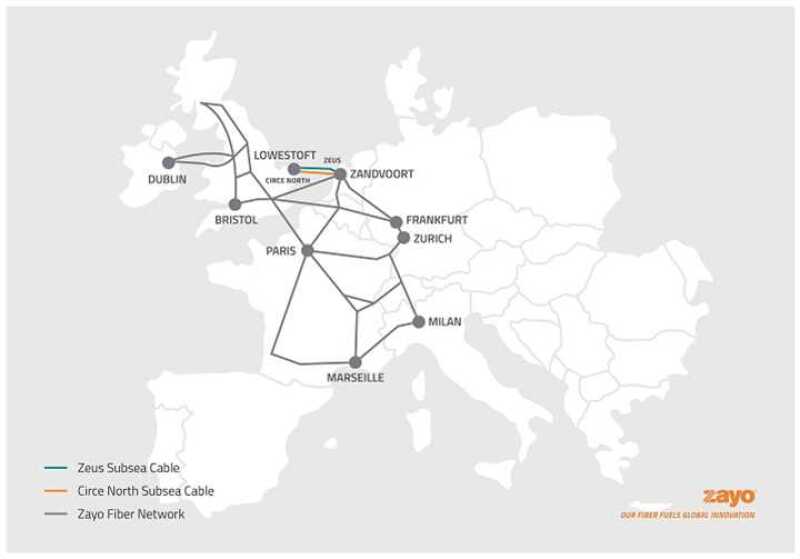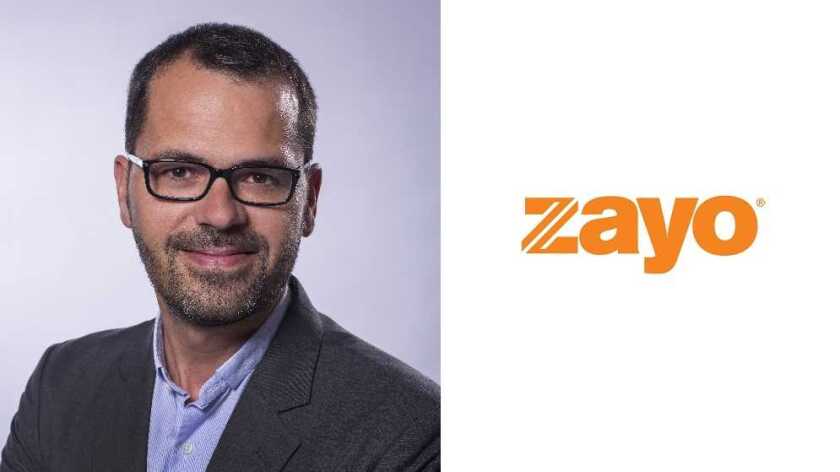Last month Zayo announced plans to build a new diverse subsea cable connecting UK to mainland Europe. Named Zeus, the "highly fortified, hybrid, ultra-low-loss (ULL) cable" will run parallel but along a diverse route to Zayo’s existing Circe North subsea cable.
Capacity speaks to Zayo's Yannick Leboyer, chief operations officer of Europe about the main drivers behind the decision to build the new system and as always, more capacity is top of the list.
"We already own Circe North on the same route and it actually goes to the same CLS (cable landing station) and essentially we were at the point where we were running out of capacity," he says.
"So, if we wanted to continue on that path, which we see as very strategic, we needed to find a way to augment capacity."
Leboyer also admits that as Circe North is over 20-years old, there was the strong probability that it would not last "another 20 years" and so contingencies needed to be put into place.
"We knew we were running out of capacity on the current system, and we can't count on existing systems to remain in operation for the next 20 years so that's why we decided to go ahead and push for a new cable."

The pandemic has played its part accelerating data consumption and demand but Leboyer says "the trend was already there" with demand for long-haul connectivity whether it be dark fibre or lit capacity coming from all its customers looking to add capacity all the major markets in Europe.
"I would say the pandemic probably accelerated the need, but the trend was already there. We were on this road before the pandemic as we already saw the rationale for it," added Leboyer.
Following a similar route Circe North, Zeus will connect at existing CLS' in Zandvoort, the Netherlands and Lowestoft, UK where it lands as "the idea is to use infrastructure we already own and operate" and given that it is an unrepeatered system "from a distance perspective we're probably at the limit in terms of extending that any further".
But once in Zandvoort Zayo has multiple routes from Zandvoort into an Amsterdam which is sizable data centre market. This includes the known places such as Science Park but there is also a lot of traders in areas such as Schiphol, where Zayo is "building a route that would allow us to go into places like the Schiphol area, avoiding the city centre of Amsterdam."
"So, beyond the economic rationale of reusing the facilities that we already have, being able to then go directly to some of those data centres in Amsterdam, was also pretty important," says Leboyer.
At the time of the announcement, it was confirmed that Zeus would deliver more than 4,000Tbps of capacity and using fibre optic infrastructure provider, Hexatronic’s high-fibre-count cable, provide next-gen cable technology including high-capacity 192 fibre, 100% double armoured cable with increased crush resistance and ultra-low loss (ULL) fibre technology for added resiliency.
Admittedly not the technical expert in Zayo's team, Leboyer did share that the hybrid mix to its cable choice combining Hexatronic and ULL means that they "will have minimal losses, which in turn means we'll get a lot more throughput on our fibres".
Partnering with Dutch contractor, DEME Group on the installation of Zeus, Leboyer admits that what attracted them most to the firm was its use of a dual fuel vessel, making it highly energy efficient compared to some others.
"There's wind turbines and solar panels on board. It also uses recycled grease and oil, so it's probably one of the most sustainable boats we could secure. This in turn, probably makes Zeus one of the greenest cable projects as of late," he says.
Remaining tight lipped on the cost of Zeus, Leboyer only says that it is a "significant investment" but even more poignantly, its an indication that its newly acquired investors EQT and Digital Bridge (formerly Digital Colony) believe in the roadmap.

But it's not just Zayo that’s betting on subsea, Telxius following the sale of its tower assets recently doubled down on its commitment to underwater cables as central to its growth plans.
Google and Facebook recently launched two new Asian subsea cable projects in Asia, Echo and Apricot, and these are but a few examples.
"As a company we tend to do a lot more terrestrial fibre construction, we typically don't build subsea cables every year, but that is very much due to the nature of the geography in Europe. But If you want to connect those major data centre markets across Europe, and you want to be the infrastructure owner which is our mission, then you need to play in subsea."
As such as prolific terrestrial fibre owner, operator it should come as no surprise that Zeus will " be connected to the Frankfurt, London, Amsterdam and Paris (FLAP) network that we have" and looking ahead Zayo is working on "augmenting our capacity across FLAP because the rising demand is exhausting our capacity on terrestrial as well as subsea, as well as the wetplant".
Despite Zeus following the same route as Circe North the biggest differences between the two systems will be that Zeus will lay approximately one kilometre away from the existing system and thanks to the new technology from the laying vessels, Zeus will be approximately two to three metres deep in terms of burial.
As result "we feel that the or the new cable will be a lot more reliable and then the existing one because it will be buried further down and its fully armoured," says Leboyer.
Bearing in mind that Zayo has already completed 400G trials on the existing Circe North system, he is fully confident that Zeus will enable the speedy delivery of these types of services once live.
"I see Zeus as one of the first segments where we will probably be able to offer from a latency perspective, 400G services, which is what the teams are actively working on," adds Leboyer.
Marine operations for the project are due to begin in August of 2021 with a ready for service date set for by the end of Q1 2022, but for Leboyer "the idea is to continue".
"One major push we've had over the last few months is augmenting capacity our FLAP region, and this is our first major step in that direction, but team's really busy on working on the rest of FLAP," he explains.
Beyond that he says they want to expand beyond FLAP and "continue to serve the needs of our customers"






